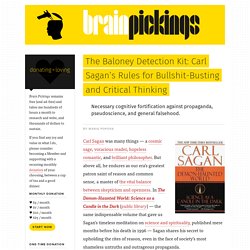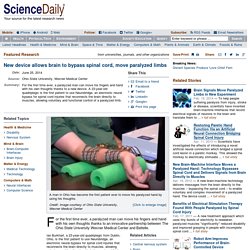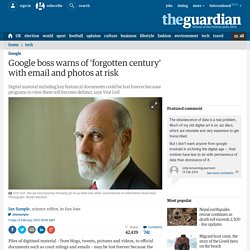

Cyberspace. Green Energy. Nuclear. This Kid Made an App That Exposes Sellout Politicians. The Greenhouse app highlighting how much money each industry gave Republican Congressman Mike Simpson before the last election.

Groundbreaking Technology Transforms Greenhouse Gases Into Furniture, Phone Cases, and Plastic Bags. If there’s a symbol of the environmental destructiveness of our consumer culture, it’s plastic, made from carbon-spewing petroleum products.

But what if bags, bottles, and other plastics could help save the environment, not destroy it? What if your laptop computer, smartphone case, and office furniture, rather than emitting planet-warming greenhouse gases, stored them instead? They will soon. A Southern California company called Newlight Technologies has developed a way to make plastic from carbon dioxide and other greenhouse gases. Reinventing The Internet With MaidSafe - I Have Bitcoins. The rise and rise of Bitcoin has eased society into the idea of a decentralized, unregulated monetary system.

But are we ready for a decentralized internet? What looks to be one of the most interesting tech developments since the Bitcoin protocol, with development having started at around about the same time; is a company called MaidSafe. MaidSafe is an acronym for Massive Array of Internet Discs – Secure Access For Everyone. Developed by a chap called David Irvine, this project aims to replace the internet with a more secure, efficient, user-driven alternative.
MaidSafe replaces servers with home computers By cutting servers altogether, MaidSafe functions entirely off the spare space and computing power of its user network, which is able to manage both static and dynamic data. The SAFE network is fully autonomous and does not require any human interaction for authentication, encryption or shredding. The Baloney Detection Kit: Carl Sagan’s Rules for Bullshit-Busting and Critical Thinking. By Maria Popova Carl Sagan was many things — a cosmic sage, voracious reader, hopeless romantic, and brilliant philosopher.

But above all, he endures as our era’s greatest patron saint of reason and common sense, a master of the vital balance between skepticism and openness. In The Demon-Haunted World: Science as a Candle in the Dark (public library) — the same indispensable volume that gave us Sagan’s timeless meditation on science and spirituality, published mere months before his death in 1996 — Sagan shares his secret to upholding the rites of reason, even in the face of society’s most shameless untruths and outrageous propaganda.
Facebook 'in talks to buy drone satellite firm' Facebook is reportedly in discussions to acquire Titan Aerospace, a manufacturer of drones, for around $60m.

Titan Aerospace specialises in solar-powered, very high flying drones capable of staying airborne for five years at a time, positioned as a more cost-effective alternative to orbital satellites dubbed as “atmospheric satellites”. The talks, confirmed by technology site TechCrunch, indicate that Facebook is likely interested in these satellite alternative drones that fly as high as 20km in altitude as part of its Internet.org initiative. Facebook founder Mark Zuckerberg took to the stage at Barcelona’s Mobile World Congress in February to elaborate on the Internet.org coalition’s plans to connect the next five billion people to the internet in developing nations. The drones could be used to blanket large areas of Africa and other countries with internet access. Consumers Will Soon Have Devices In Their Hands To Detect GMO and Toxic Foods.
High Frequency Active Auroral Research Program. The most prominent instrument at the HAARP Station is the Ionospheric Research Instrument (IRI), a high-power radio frequency transmitter facility operating in the high frequency (HF) band.

The IRI is used to temporarily excite a limited area of the Ionosphere. Other instruments, such as a VHF and a UHF radar, a fluxgate magnetometer, a digisonde (an ionospheric sounding device), and an induction magnetometer, are used to study the physical processes that occur in the excited region. Work on the HAARP Station began in 1993. The current working IRI was completed in 2007, and its prime contractor was BAE Systems Advanced Technologies.[1] As of 2008, HAARP had incurred around $250 million in tax-funded construction and operating costs.
New device allows brain to bypass spinal cord, move paralyzed limbs. For the first time ever, a paralyzed man can move his fingers and hand with his own thoughts thanks to an innovative partnership between The Ohio State University Wexner Medical Center and Battelle.

Ian Burkhart, a 23-year-old quadriplegic from Dublin, Ohio, is the first patient to use Neurobridge, an electronic neural bypass for spinal cord injuries that reconnects the brain directly to muscles, allowing voluntary and functional control of a paralyzed limb. Burkhart is the first of a potential five participants in a clinical study.
Google boss warns of 'forgotten century' with email and photos at risk. Piles of digitised material – from blogs, tweets, pictures and videos, to official documents such as court rulings and emails – may be lost forever because the programs needed to view them will become defunct, Google’s vice-president has warned.

Humanity’s first steps into the digital world could be lost to future historians, Vint Cerf told the American Association for the Advancement of Science’s annual meeting in San Jose, California, warning that we faced a “forgotten generation, or even a forgotten century” through what he called “bit rot”, where old computer files become useless junk. Cerf called for the development of “digital vellum” to preserve old software and hardware so that out-of-date files could be recovered no matter how old they are. “We don’t want our digital lives to fade away.